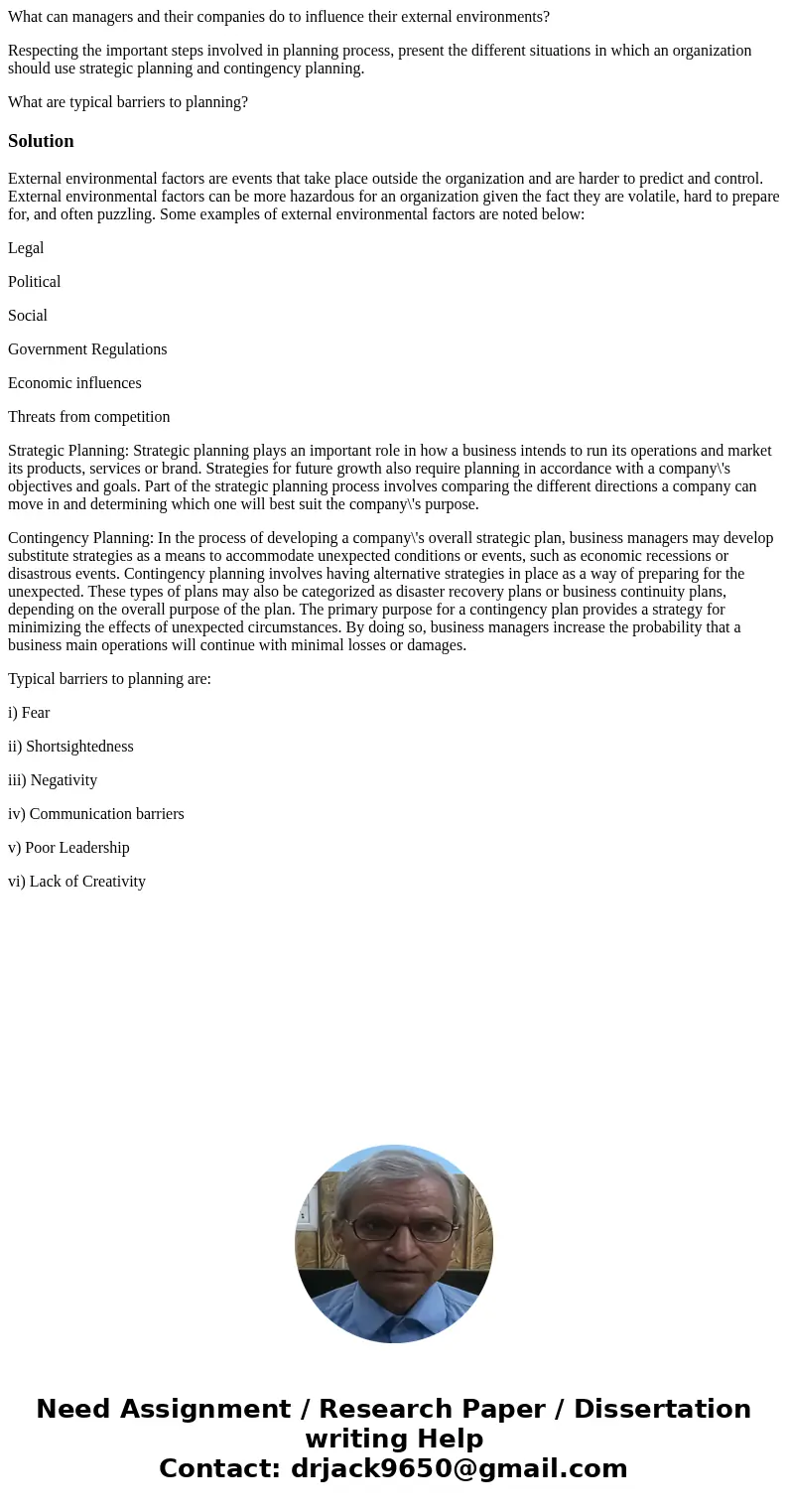What can managers and their companies do to influence their
What can managers and their companies do to influence their external environments?
Respecting the important steps involved in planning process, present the different situations in which an organization should use strategic planning and contingency planning.
What are typical barriers to planning?
Solution
External environmental factors are events that take place outside the organization and are harder to predict and control. External environmental factors can be more hazardous for an organization given the fact they are volatile, hard to prepare for, and often puzzling. Some examples of external environmental factors are noted below:
Legal
Political
Social
Government Regulations
Economic influences
Threats from competition
Strategic Planning: Strategic planning plays an important role in how a business intends to run its operations and market its products, services or brand. Strategies for future growth also require planning in accordance with a company\'s objectives and goals. Part of the strategic planning process involves comparing the different directions a company can move in and determining which one will best suit the company\'s purpose.
Contingency Planning: In the process of developing a company\'s overall strategic plan, business managers may develop substitute strategies as a means to accommodate unexpected conditions or events, such as economic recessions or disastrous events. Contingency planning involves having alternative strategies in place as a way of preparing for the unexpected. These types of plans may also be categorized as disaster recovery plans or business continuity plans, depending on the overall purpose of the plan. The primary purpose for a contingency plan provides a strategy for minimizing the effects of unexpected circumstances. By doing so, business managers increase the probability that a business main operations will continue with minimal losses or damages.
Typical barriers to planning are:
i) Fear
ii) Shortsightedness
iii) Negativity
iv) Communication barriers
v) Poor Leadership
vi) Lack of Creativity

 Homework Sourse
Homework Sourse